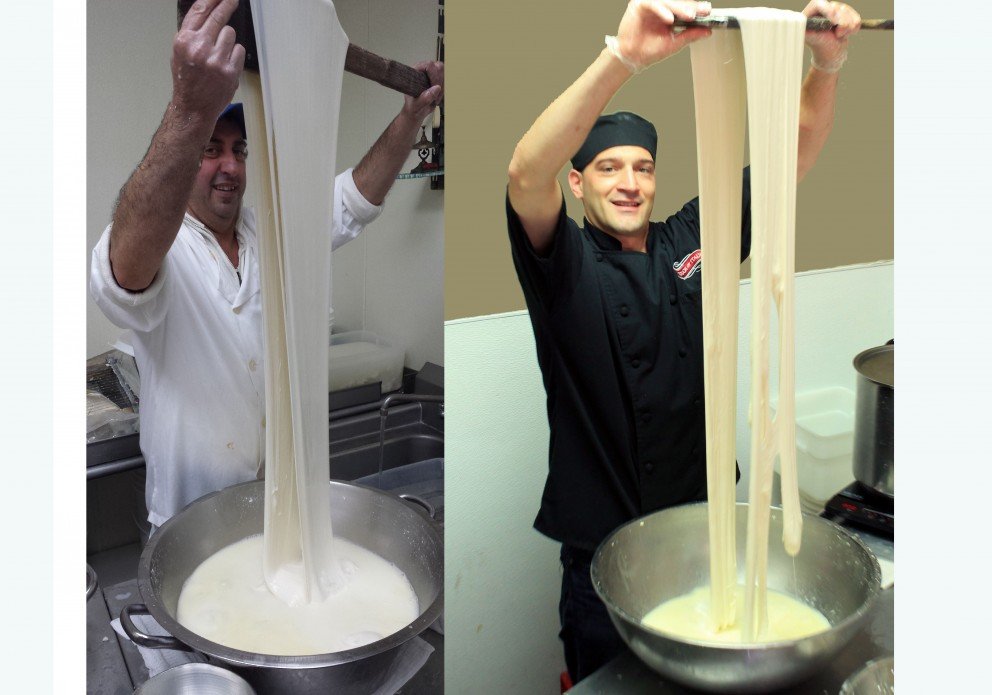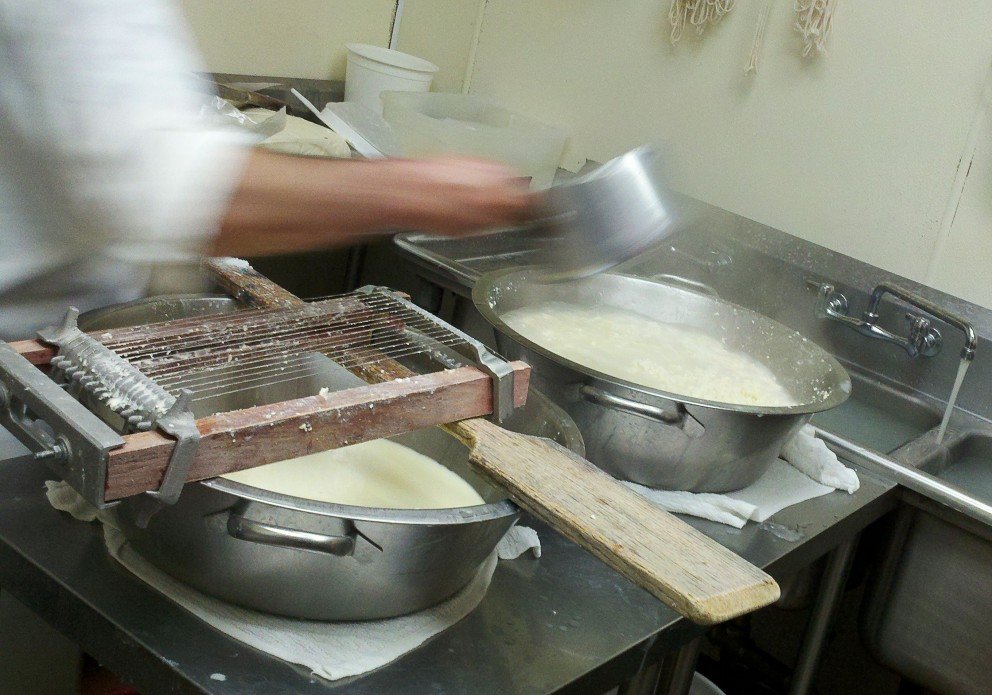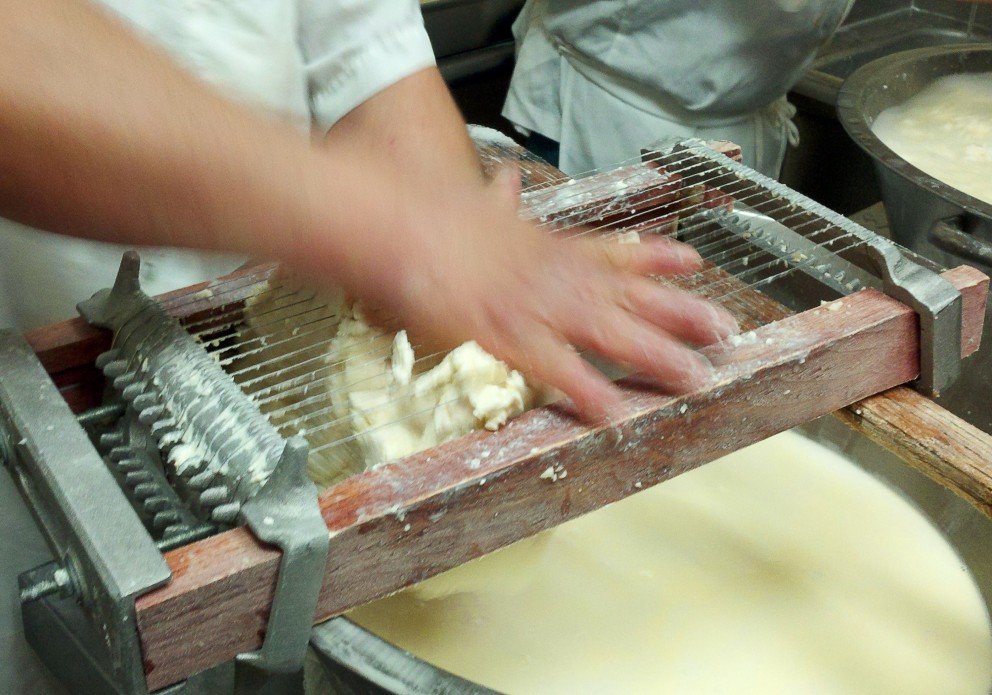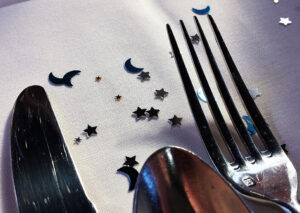Why are simple things so complicated? Pasta filata is a technique for the manufacture of a family of cheese known in English as stretched curd. So, is pasta filata a noun or a verb? If there were a one-word answer I wouldn't be writing this, so maybe we can look at the history, as that may be less complicated.
The history of pasta filata is as old as “modern” European farming techniques, that is, at least seven thousand years old and from the Middle East. There are modern variants of pasta filata in every Western culture from India on the east side to Mexico on the west side. So let's get relevant and go to Italy; lovely old Italy. Pasta filata is the basic hardworking mother of mozzarella and provolone. Evidently, writing got to Italy around the same time as pasta filata, because there is no record of pasta filata in Italy before that time. The history is complicated, but happily it is repeatable. In a few words, pasta filata (yes, both a noun and a verb!) is a technique used in the manufacture of a family of Italian cheeses also known in English as stretched-curd, pulled-curd, and plastic-curd. Stretched curd cheeses manufactured from the pasta filata technique are distinguished by a unique plasticizing and kneading treatment of the fresh curd in hot water; imparting the finished cheese with its characteristic fibrous structure, melting and stretching properties.
The cheesemaking begins in the normal way. The milk (usually from cows or water buffalo) is warmed and curdled and allowed to rest for an hour. The curds are then cut into small pieces, the whey is drained off and the curds then rest for a few hours. On to the filatura: The curds are steeped in a bath of very hot whey or water (for Mozzarella di Bufala Campana the temperature is around 180F). When they begin to float, most of the liquid is removed and the curd is mixed and kneaded until the required soft, elastic, stringy texture is obtained. The mass of curd is divided (often by pulling out a thick strand and chopping it) and shaped into individual cheeses.
The genius and genesis of pasta filata is that by creating a simple and stretchable curd, the producers have a variable basis for a “fresh” or an “aged” cheese based on their expectations of its usage. In the case of mozzarella, the process is now essentially complete. Ideally, fresh mozzarella should be eaten within a matter of a few days. For other formaggi a pasta filata, such as provolone, caciocavallo silano, pallone di gravina and scamorza, further processing is needed, such as ageing and, in some cases, brining and/or smoking.
So the question remains: Will we eat the cheese for supper tonight, for supper in three months or supper next year?
If you answered, “tonight,” then, as above, we will heat our pasta filata to 180 degrees Fahrenheit (+/- 20 degrees) in a water bath and manipulate and add texture by stretching the curd. Think taffy. We will define and improve the texture of the curd by providing layers of moist stretched curd and salted water (traditionally, the water is actually the resultant whey). This may sound simple but it is not. Handmade mozzarella requires craft and skill. And it needs to be eaten for supper today or tomorrow at the latest! Handmade mozzarella has a delicacy that machined mozzarella never achieves. All of the typical commercial mozzarellas are machine-stretched and rolled, and at best are adequate – very brand specific – or at the most, typical. If you want them for supper next month, they will exhibit the delicacy and bite of a tennis ball.
The basis for my judgement on the difference between mozzarellas is easy to prove: All you have to do is taste them side by side, which you can easily do here locally. Buy a labeled “mozzarella” at the superdupermarket of your choice (don't forget to check the expiration date) and take it to the Touch of Italy Bakery at the Villages of Five Points in Lewes when they are hand making mozzarella. (Feel free to call first. You are not imposing: The makers love to give tastes.) Take a bite of both. Compare. See what you think. If you are reading this, then I know what you will think, and fortunately you can score some of the good stuff right there at the bakery.
One last note: According to the Italians, we Americans do not eat mozzarella. To the Italians, mozzarella is only made with buffalo milk (aka, “water oxen”). What we eat (unless it is Mozzarella di Bufalo, imported from Italy) is called Fior di Latte by the Italians, i.e., a Mozzarella-(like) cheese made from cow's milk. Be careful of imported and domestic cheeses labeled “buffalo style!” They are stretching the truth as well as the curd.
Want your pasta filata-made cheese for supper next year? Read Part 2.
Attend one of Bill's popular cheese classes at Touch of Italy. Click here for more info.

































